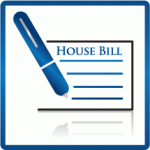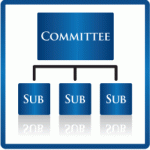 Idea
Idea
A citizen, group, or legislator has an idea for a new law.
A Representative then decides that the idea should be a bill.
House Bill Drafted

The Representative (also called a member) contacts House Bill Drafting Services and requests a bill to be drafted. The member may provide very detailed instructions or just the general idea. A staff member, called a “bill drafter,” will work with the member and his or her staff until the member is satisfied and a final draft is approved. Once approved, the idea receives a bill number (odd numbers only in the House) and is called a bill for the first time.
1st Reading is by Publication in the House Journal

In accordance with Article III of the Florida Constitution, all bills must be read three times before being voted on. The 1st Reading is by publication of the bill number, its sponsor, and a short one paragraph description of the bill, called a title, in the House Journal. The Speaker will also refer the bill to one or more committees or subcommittees in the House. Committees and subcommittees are groups of members appointed to review specific areas of government such as education, criminal justice, and agriculture, to name a few.
 House Committee or Subcommittee Meeting
House Committee or Subcommittee Meeting
Once a bill is referred to a committee or subcommittee, it is reviewed for inclusion on an agenda. The Chair of the committee or subcommittee will decide which bills should be heard. In 2010, of the 843 general bills filed, 488 “died” in a council or committee, never being heard. Once a bill has been heard and voted favorably by all of its committees or subcommittees, it is placed on a House Calendar signifying that it is available for 2nd Reading.
 2nd Reading on the Floor is by consideration of the Special Order Calendar
2nd Reading on the Floor is by consideration of the Special Order Calendar
Once a bill is on the House Calendar, that does not mean that the bill will be heard on the floor. The House has a special committee called the Rules & Calendar Committee that will determine when and if a bill will be sent to the floor for 2nd Reading. These bills are placed on a recommended Special Order Calendar. Each Special Order Calendar is voted on prior to the House considering those bills on a specific legislative day. Once a bill has been introduced and read on the Special Order Calendar, it is explained, questions are answered about the bill, and amendments are considered. This constitutes a bill’s 2nd Reading.
 3rd Reading on the House Floor by consideration of the Third Reading Calendar
3rd Reading on the House Floor by consideration of the Third Reading Calendar
After a bill has been read a second time on the Special Order Calendar, it is taken up on 3rd Reading, generally, on a subsequent legislative day. This is the final reading of the bill prior to being voted on. Once a bill’s title has been read a third time, it is explained again, questions are again permitted, and amendments may be offered; at this point, amendments may only be considered by a 2/3 vote. The final action is for debate on the bill prior to the sponsor making a closing statement. The bill is then voted on by the members of the House. Any bill not receiving a favorable vote “dies” on the floor.
 Senate Consideration
Senate Consideration
Once the bill is passed by the House, it is sent to the Senate with a “message.” The Senate’s process varies slightly from the House’s process.
The Senate may vote to pass the bill without amendments and return the bill to the House, refer the bill to a committee for consideration, or defeat the bill on the Senate floor. The Senate may decide to further amend the bill and pass it. If this happens, the bill is returned to the House.
 Return to the House
Return to the House
If the House has received a House bill having been passed by the Senate without amendments, it puts the bill in its final form called an “enrolled” version. The enrolled version of the bill is then sent to the Governor for consideration. If the Senate has further amended the House bill, it is returned to the House for consideration of the Senate amendments. This “back and forth” consideration of the bill is an attempt to perfect the bill’s language by working out the differences, but generally ends after several exchanges by each side. At any time, either the Senate or the House may decide to abandon the effort of reaching a compromise and the bill dies. If the issue is important enough, however, the House and Senate may agree to appoint a conference committee comprised of Representatives and Senators to work out the details of the bill.

 Consideration by the Governor
Consideration by the Governor
Generally, if the Legislature is in session and has sent the Governor a bill, he/she has seven days to consider the bill while the Legislature remains in session. If the bill is received after the Legislature has adjourned “sine die” (the 60-day session has ended), the Governor has 15 days to consider the bill. The Governor may take one of three actions: sign the bill into law, allow the bill to become law without his/her signature, or veto the bill. If the Governor vetoes the bill, the Legislature may override his/her veto by a 2/3 vote of the Legislature during the next Session.
Key Point…
At any point of consideration, the bill may “die” for that legislative session, which means it will no longer be considered.
Produced and Published by the Office of the Clerk Florida House of Representatives 8/14/2012
